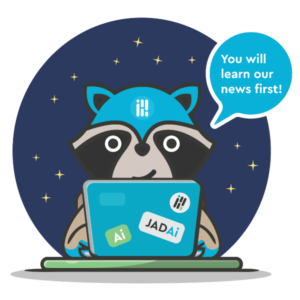
Top AutoML Books Easing Out Machine Learning
“You can not manage what you do not count.” There is a lot of wisdom in this saying, by W. Edwards Deming and Peter Drucker as it describes the recent digital data boom and why it is so important. Data comes from everywhere, and organizations across the globe are looking to gather, organize, and mine the gold hiding in the torrential amounts of data they generate; in order to transform them into actionable and high-value business insights and find the patterns that will allow them to predict the future. As data accumulation is exploding, so is the need for analysis and insights. But as numbers show though, there is a massive requirement for data scientists; the supply is not matching the industry’s demands. Hence, hiring data scientists – highly skilled professional data science experts has become supercritical. Today, there is virtually no business function that cannot benefit from them. In fact, the Harvard Business Review has labeled data science as the “sexiest” career of the 21st century.
This is why machine learning needs to be automated to become accessible to everyone regardless of coding knowledge. AutoML tools are the need for data scientists to reduce their workloads. Until a few years ago, the field of Machine Learning was limited to academic research and to a few select data scientists who knew how to program. This has changed significantly. AutoML tools fully automate the machine learning analysis, democratize it for non-experts, boost the productivity of expert analysts, guarantee the statistical validity of results, enable the replicability of analyses, and ensure the data and predictive model provenance.
Certainly, Machine Learning is still a hot topic, but automatic machine learning (AutoML) is a trend that is gaining pace. That means it’s time to learn about it. A great way to do that is to read a couple of books. Find some below that will help gain a better understanding of its features, applications, and What is AutoML:
Automated Machine Learning: Methods, Systems, Challenges
There is a lot to learn about automated machine learning theory and practice. This eBook can get you started the right way. This open access book presents the first comprehensive overview of general methods in Automated Machine Learning (AutoML), collects descriptions of existing systems based on these methods, and discusses the first series of international challenges of AutoML systems. ML methods that can be used easily and without expert knowledge. However, many of the recent machine learning successes crucially rely on human experts, who manually select appropriate ML architectures (deep learning architectures or more traditional ML workflows) and their hyperparameters. To overcome this problem, the field of AutoML targets a progressive automation of machine learning, based on principles from optimization and machine learning itself. This book serves as a point of entry into this quickly-developing field for researchers and advanced students alike, as well as providing a reference for practitioners aiming to use AutoML in their work.
AutoML Models A Complete Guide – 2019 Edition
This book asks the right questions about AutoMl and how one can make the most out of AutoML models. ‘What are we really trying to accomplish here? And is there a different way to look at it?’ AutoML Models A Complete Guide answers questions that have to do with processes to solve and challenges you meet in every project to make AutoML Models investments work better. What are the long-term AutoML models’ goals? Is it economical; do you have the time and money? How do you hand over AutoML models context? What prevents you from making the changes you know will make you a more effective AutoML models leader? How much contingency will be available in the budget? These questions serve to help understand AutoML Models and apply documented strategic best practices that align with overall goals.
It features 900 new and updated case-based questions, organized into seven core areas of process design, helping identify areas in which AutoML Models improvements can be made.
Automated Machine Learning in Action.
Automated Machine Learning in Action teaches you to automate your machine learning pipelines with AutoKeras and Keras Tuner. Written by the creators of the AutoKeras system, it’s full of AutoML techniques and advanced toolkits for optimizing how your machine learning models function.
AutoML concepts and techniques are introduced through real-world examples and practical code snippets—no complex math or formulas. You’ll quickly run through machine learning basics that open upon AutoML to non-data scientists, before putting AutoML into practice for image classification, supervised learning, and more. You’ll learn to automate selecting the best machine learning models or data preparation methods for your own machine learning tasks, so your pipelines tune themselves without needing constant input.
Hands-On Automated Machine Learning
Written by Sibanjan Das and Umit Mert Cakmak, this book is for the budding data scientist, data analyst, or machine learning enthusiast that are new to the idea of automated machine learning. In this book, you’ll learn how to automate different tasks in the machine learning pipeline, such as data preprocessing, feature selection, model training, model optimization, and much more. It also demonstrates how you can use the available automation libraries, such as auto-sklearn and MLBox, and create and extend your own custom AutoML components for Machine Learning.
By the end of this book, you will have a clearer understanding of automated data and model pipelines for faster machine learning applications.
Hands-On Artificial Intelligence on Google Cloud Platform
In this book, written by Anand Deshpande, Manish Kumar, and Vikram Chaudhari one will be able to understand the basics of cloud computing and explore GCP along with learning to implement machine learning algorithms with Google Cloud AutoML.
This book basically acts as a guide and shows how GCP tools can be used to build AI-powered applications with ease and to manage thousands of AI-powered implementations on the cloud. One will also be able to learn how to implement Cloud AutoML to demonstrate the use of streaming components to perform data analytics and understand how DialogFlow can be used to create a conversational interface. With other activities, in the end, one will be able to build and deploy AI applications to production with the help of a use case.
Practical Automated Machine Learning On Azure.
Once you complete Practical Automated Machine Learning on Azure, you’ll understand how to apply Automated Machine Learning to your data right away. Authored by Deepak Mukunthu, Parashar Shah, Wee Hyong Tok this practical book will help you learn how to apply Automated Machine Learning and build models without spending days and weeks.
Building machine learning models is an iterative and time-consuming process. Even those who know how to create these models may be limited in how much they can explore. Once you complete this book, you’ll understand how to apply Automated Machine Learning to your data right away.
JADBio makes it easy and affordable for health-data analysts and life science professionals to use data science to discover knowledge while reducing time and effort by combining a robust end-to-end machine learning platform with a wealth of capabilities.
Grab a FREE Basic plan here – What are you waiting for?














